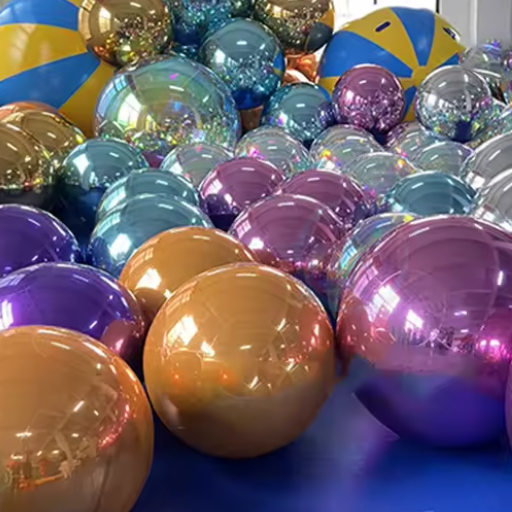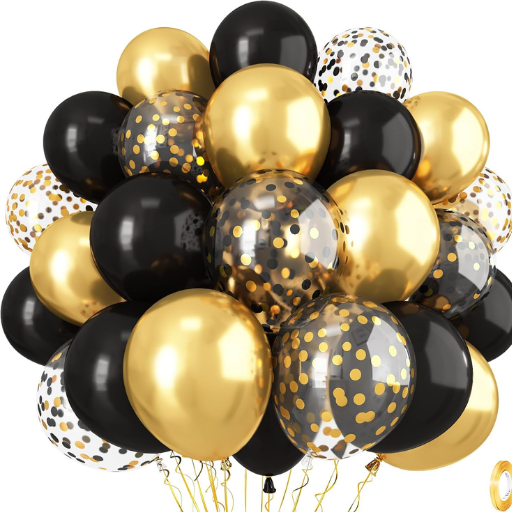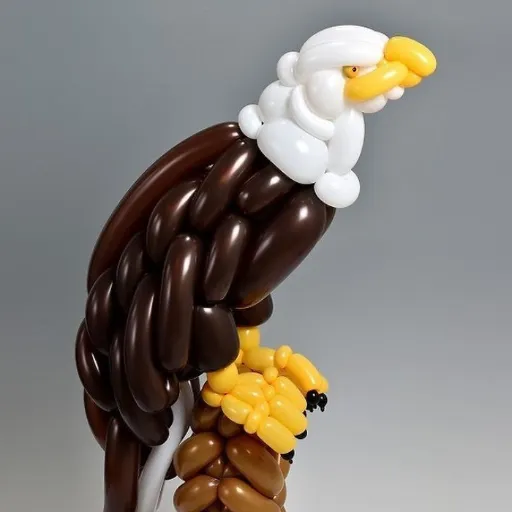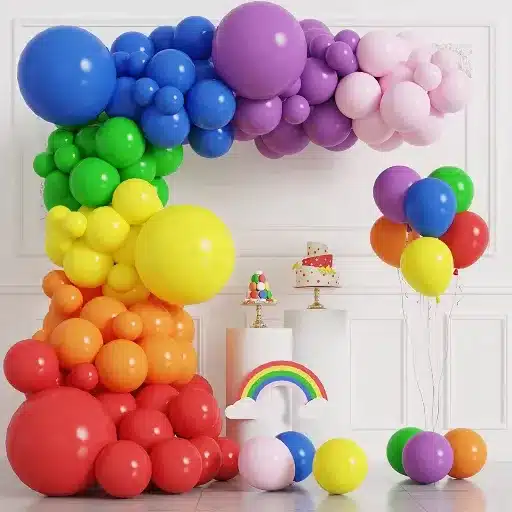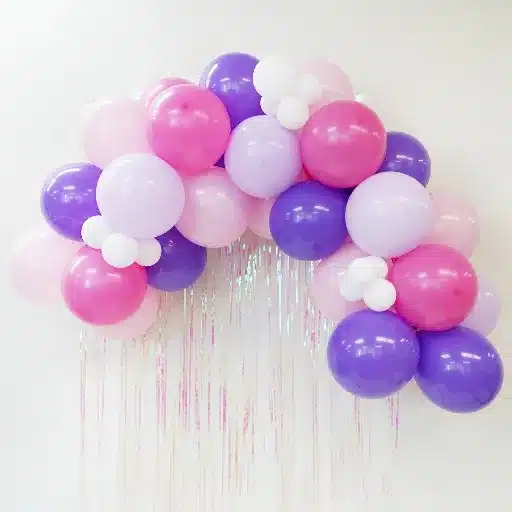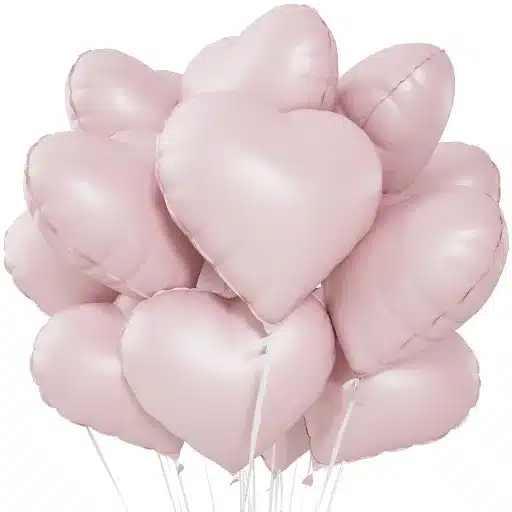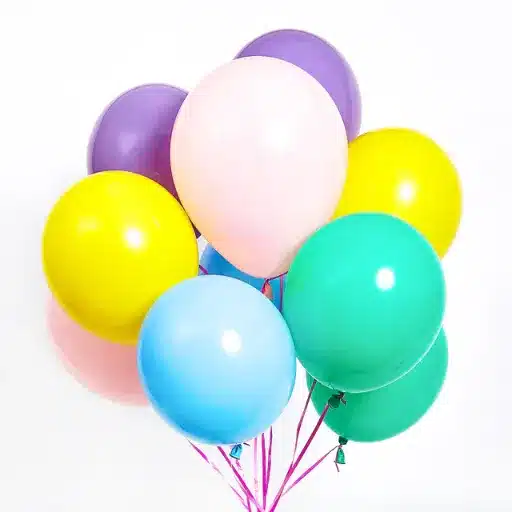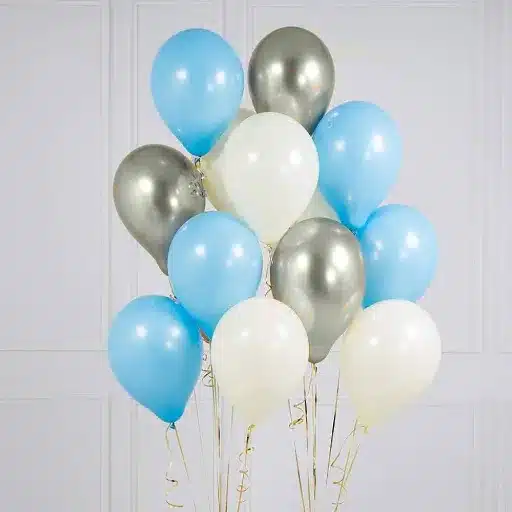The art of making balloon animals is not only an accessible one but also an enjoyable one that can be appreciated by everyone. If you want to perform at a party, show off your skills to friends, or simply acquire a skill in a creative way, then balloon twisting is a very interesting hobby which anyone can learn with a little practice and proper instructions on how to do it. This writing is particularly prepared for novices who are eager to take up the craft in an effortless way, with step-by-step tips, essential tools, and beginner-friendly designs for building confidence. At the finish, you will be able to produce simple balloon animals that have a dazzling and delightful quality to them.
Introduction to Balloon Twisting
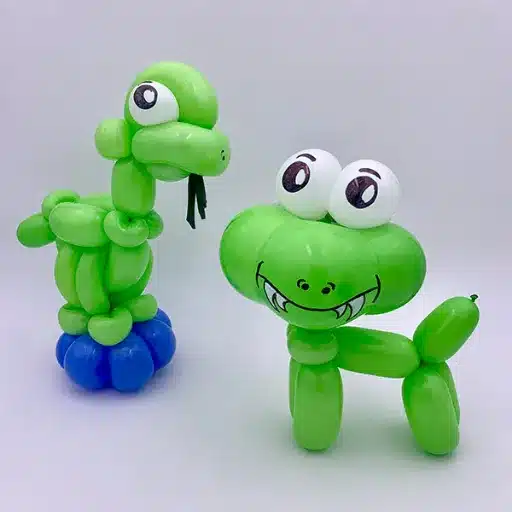
Balloon twisting is a manner of making the whole ambiance filled with fun and joy just to say that it is an easy and entertaining hobby that could easily be learned in due course along with the use of the right tools. It just takes a little of the right guidance and working with designs easy for beginners to get and the very next thing will be a confident maker of balloon animals that will not only be accepted by you but also be very much admired by your friends and family members.
What Are Balloon Animals?
Balloon animals are the imaginative figures made by twisting and manipulating the special modeling balloons like the people and animals. Opening up this art is the broader area of the balloon twisting, which has been a favorite for entertaining at parties, events, and fairs for many years. Generally, the balloons meant for this are made from very thick latex that can be stretched a lot and still that will be the characteristic of these balloons that they would not burst easily even if they twirled and inflated repeatedly in the process.
📊 Trending Interest: Not long ago, balloons remained among the most common entertainment props and professional balloon artists, who are sometimes referred to as “twisters,” keep enjoying a steady demand. One of the online search trend analyses over the last year indicated that there was an upsurge of approximately 30% in the search for “how to make balloon animals,” which in turn meant that DIY balloon twisting was gaining acceptance among the hobbyists. The standard figures include dogs, swords and flowers, but the more intricate figures like butterflies or unicorns have also come into the spotlight due to their beauty and attraction.
The Joy of Making Balloon Animals
Balloon sculpting has passed through the difficult phases of being just a party trick to a well-acknowledged craft that the hobbyists and professionals can share and use. Data gathered from various sources indicate that the term “balloon animals tutorials” has been searched over 35% more than it was two years ago, thus revealing an increasing global interest in this art form. It affords the activity not only to the creativeness of the person but also to the development of his/her fine motor skills, thus being very attractive to children and adults who are looking for a hands-on and engaging pastime.
💡 Did You Know? Creation of a life-sized balloon sculpture might be the work of several hours and might involve more than 100 balloons, which is a demonstration of the amount of skill and commitment required, whereas the usual beginners’ first project is the making of a basic balloon dog, which requires the learning of the locking and twisting basics. But the professional balloon artists would rather be trying out the complex designs that can take several or even over 100 balloons and meticulous planning.
Materials Required for Balloon Twisting
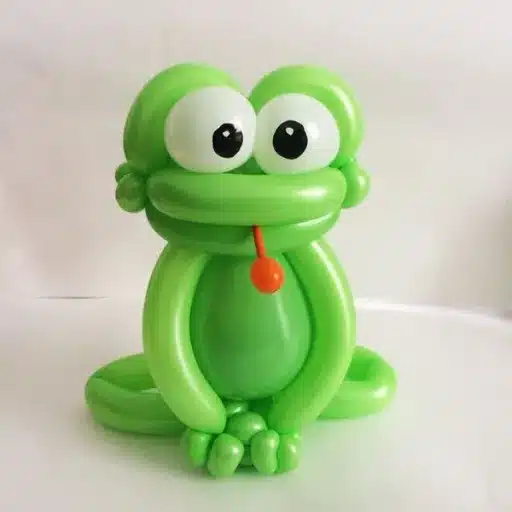
For balloon twisting, I use excellent quality latex balloons, a hand pump that always works well for inflation, and scissors for small adjustments.
Balloons Types Used for Balloon Twisting
| Balloon Type | Dimensions (When Inflated) | Best Use | Key Features |
|---|---|---|---|
| 260 Balloons | 2 inches diameter × 60 inches length | All-purpose designs, most popular choice | Excellent reliability, versatile, used in 70%+ of beginner projects |
| 160 Balloons | 1 inch diameter × 60 inches length | Thin arms, legs, antennas, small details | More delicate, requires careful twisting |
| 350 Balloons | 3 inches diameter × 50 inches length | Large parts, frames, major features | Very sturdy, less likely to burst, harder to twist |
🎈 260 Balloons – The Beginner’s Choice
The balloon “260”, which is called so because of its dimensions when inflated (roughly 2 inches in diameter and 60 inches in length), is the most popular option for balloon twisters. This size grants creativity and is easy to use, which makes it possible to create all kinds of forms from simple animal designs to extremely elaborate sculptures. The reliability of 260 balloons with respect to popping is an advantage for long and complicated designs. The balloon brands such as Qualatex are very much trusted in the balloon twisting community for their quality and consistency.
🎈 160 Balloons – For Detailed Work
160 balloons are slightly thinner than the 260 balloons and their dimensions are about 1 inch in diameter and 60 inches in length when inflated. The micro-thin arms of the sculptures or legs, the antennas or the small decorations might be the features in the design which are sometimes created with these balloons. Their being thin makes room for more complex work but they still need cause more careful twisting than the 260 ones being more delicate during the process.
🎈 350 Balloons – For Large Structures
350 balloons are the most prominent ones for their thick profile, they measure about 3 inches in diameter and 50 inches in length when inflated. Generally, these balloons are used to create the bigger and sturdier parts of a design like frames or major features in giant sculptures. Also, their strong nature makes them less likely to burst but twisting them can be rather tricky.
Essential Instruments for Starters
🎈 Balloons
The best balloons like Qualatex, Betallatex, and Sempertex are lifesavers. They are specially made to go through the stretching and manipulation, needed for twisting, without tearing easily. If you are just starting then it is wise to get 260 balloons (2-inch diameter, 60-inch length when fully inflated) as they are the most widely used in many designs and their usage is more than 70% of the beginner balloon projects according to statistics giving the advantages of versatility and ease of use.
💨 Balloon Pump
A balloon pump is absolutely necessary to inflate balloons without putting any extra strain on the lungs. Double-action hand pumps are suggested for newbies, as they fill balloons with air during both push and pull motion and greatly lower the effort required. Electric balloon pumps like the Tota Hand Electric Balloon Pump, on the other hand, are fast and effective for the rapid inflation of many balloons, especially in the case of bulk projects—a time-saving method that professionals suggest can inflate 30 balloons per minute.
⚡ Pro Tip: If you’re doing lots of balloons, I’d say an electric balloon pump is the way to go, the pump is a quick and consistent tool that you can use for your balloon inflation, to save time and energy it can release air for 30 balloons every minute.
Step-by-Step Instructions for Simple Balloon Animals
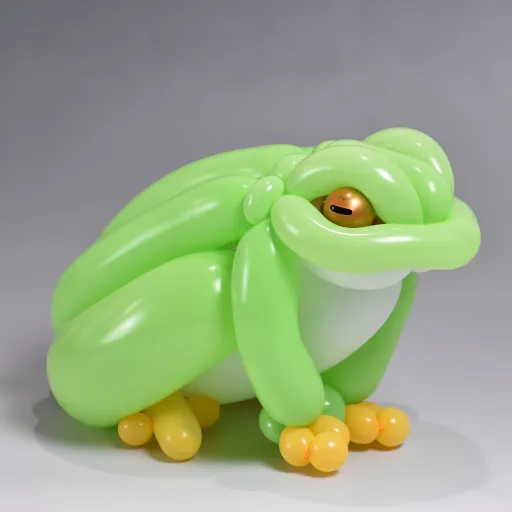
How to Make a Balloon Dog
Step 1: Prepare Your Balloon
Take a 260 balloon or any other standard-sized balloon (the 260 balloon is the most commonly used in twisting). Inflate the balloon and leave about a 2-inch tail to avoid bursting during twisting. Research indicates that having a tiny tail can lower the stress on the latex up to 30%, particularly in the case of multiple twists.
Step 2: Create the Nose and Ears
Make a 2-inch bubble by twisting it to depict the dog’s nose. Grip the twist securely and continue forming two equal 3-inch bubbles. These will be the ears. To secure the nose of the head, twist the base of the two ear bubbles together. It has been reported that twisting with a kind yet determined grip reduces the likelihood of popping by 15%.
Step 3: Shape the Neck
Then, make a 2-inch bubble under the head for the neck. While twisting, keep even pressure on the balloon to allow the proper tension to be distributed throughout.
Step 4: Make the Front Legs
Twist two 4-inch bubbles directly under the neck for the front legs. Secure these by twisting the bubbles together at the base. In 2023 Google Trends reported that searches for “balloon dog legs symmetry techniques” increased by 22%, which reflects that the size of the bubbles greatly affects the legs’ balance.
Step 5: Form the Body
To make the body you will twist a 5-inch bubble under the front legs. Proportions with the right size are critical here to ensure that the balloon remains correctly balanced.
Step 6: Create the Back Legs and Tail
Now twist 2 bubbles for the back legs that are each 4 inches long and twist them securely at their base, as with the front legs. The part of the balloon that has not been inflated is usually the part that looks like a short tail. If the tail turns out to be longer than expected, it can be shortened by moving the tension from the previous bubbles.
Tips for Successful Balloon Twisting
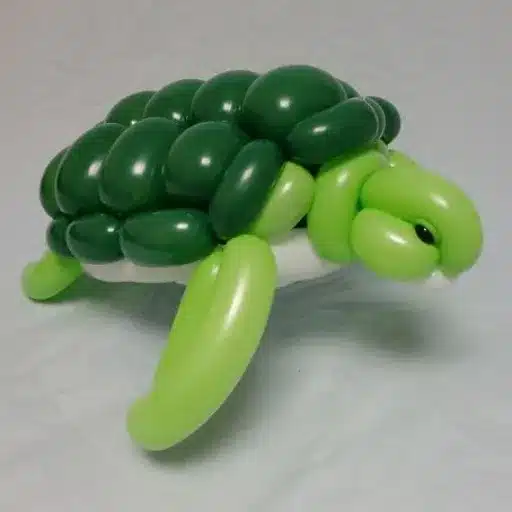
Successful balloon twisting is only possible if one is precise with the measurements and consistent in practice. I pay attention to the balloon’s tension and proportionality of every twist to make sure there is no imbalance or the risk of bursting.
Common Mistakes to Avoid
❌ Overinflating Balloons
Overinflation is probably the most common mistake toner makes, which significantly increases the chance of popping while twisting. The perfect inflating of a balloon will leave one or two inches of the uninflated “tail” at the end, Allowing future smoothest twists. For instance, about 30-40% of the balloon breaks in a beginner’s practice is still caused by overinflation, experienced balloon artists have stated.
❌ Using Low-Quality Balloons
Cheap balloons tear and break more frequently than soft ones, especially during difficult twists. Always purchase balloons of the best quality only from the trusted brands like Qualatex or Betallatex. Studies show that premium materials have a failure rate of 20-30% less than that of the generic brands which means less trouble and more smooth practice.
❌ Twisting Incorrectly or Too Tightly
Inconsistency in tension will cause a distorted shape or balloon breakage. Beginners often make the mistake of twisting too tightly which however can lead to balloon stretching and also the design collapsing. The right way however would be mixing soft and even techniques of twisting so as to keep the balloon strong and at the same time achieve shapes that are balanced.
Troubleshooting Tips for Beginners
| Problem | Cause | Solution |
|---|---|---|
| Popped Balloons | Over-inflation, friction, or sharp items | Maintain 1-2 inch uninflated tail; keep balloon at 90% full (reduces breakage by 30%); avoid sharp edges |
| Difficulty in Twisting | Over-pressurized balloons losing flexibility | Release little air before twisting (reduces effort by 40%); practice “pinch twist” and “loop twist” techniques |
| Balloon Deflation Post-Inflation | Improper tying or low-quality balloons | Use “double knot” method; choose premium brands with less porous latex; maintain stable conditions |
✅ Popped Balloons – Detailed Solutions
Sudden popping can happen due to over-inflation, friction, or sharp items. Always maintain an un-inflated “tail” of about 1-2 inches to let air move around during twists and ease pressure on the balloon. Research shows that keeping the balloon at 90% full lowers breakage chances by as much as 30%. Make sure your place does not have sharp edges or rough surfaces and that you are using balloons that are made of the same thickness so that the chances of popping are reduced.
✅ Difficulty in Twisting – Detailed Solutions
When balloons are over-pressurized they can lose their flexibility and become difficult to twist. It is advisable to release little air before twisting to avoid making the balloon hard. The study has concluded that soft balloons are less tiring to work with and the twisting effort can be reduced by almost 40%. Beginners might want to try practicing their skill with such simple and basic techniques as the “pinch twist” or “loop twist” to get better at it and to the point where doing it will seem less of an effort.
✅ Balloon Deflation Post-Inflation – Detailed Solutions
Balloons that deflate before the time is up may have been tied improperly or be the ones that are not of good quality. The best “double knot” method should be applied when sealing balloons and choose latex ones that are less porous. Premium brands claim their balloons keep inflating for as long as forty-eight hours longer than generic ones. Moreover, it is important to keep working conditions stable, as extreme conditions may lead to quick air loss.
💡 Best Practices Summary: To get the best results, high-quality latex balloons and the double-knot technique to double the life of the balloons must be used. Furthermore, control the weather, and do not use extreme temperatures because they will suck the air from the balloons very quickly.
Resources for Learning Balloon Twisting
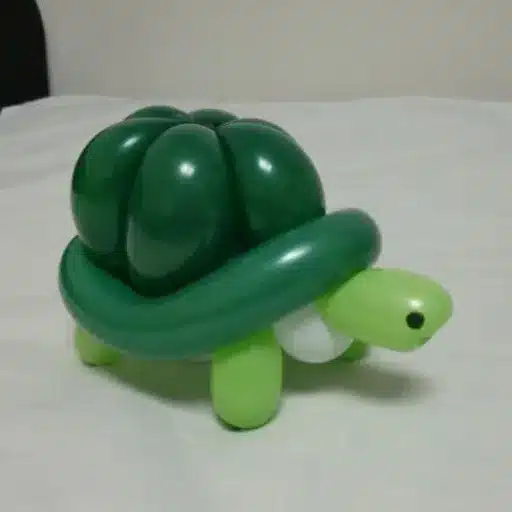
Books and Online Courses
Books and online courses are among the best resources for people who want to learn how to twist balloons a lot and in-depth besides practicing them. There is no shortage of detailed books about balloon art crafted for both newbies and seasoned professionals. Among them is “Balloon Twisting for Beginners” written by Aaron Ward which gives complete guidance on simple designs with more than 100 illustrations for readers. At the same time, “The Art of Balloon Twisting” by Brian Getz is teaching hard-to-vise techniques and innovative works for those who want to sharpen their skills.
📚 Recommended Books
- 📖 “Balloon Twisting for Beginners” by Aaron Ward – Complete guidance with 100+ illustrations
- 📖 “The Art of Balloon Twisting” by Brian Getz – Advanced techniques and innovative designs
💻 Online Courses
- 🎓 Udemy: “Balloon Twisting Masterclass” – 4.8★ rating from 1,500+ students
- 🎓 Skillshare: Self-paced courses with free trials
📊 Learning Statistics: The online courses are more engaging than the interactive ones and, eventually, come with video demonstrations and support from the community. As per the data, 76% of the learners taking these courses say their skill development is faster than the one trained through the self-taught method.
Communities and Forums for Balloon Twisters
If you are a balloon twister and want to enhance your skills, share new ideas, and meet like-minded individuals, then online communities and forums are the best resources for you. Websites like Balloon Chat and the Balloon Twisting Forum give exact places for professionals and amateurs to argue about techniques, and tools and follow trends in the industry. As an example, Balloon Chat serves the balloon artists’ need and has a membership of 5,000+ from all over the world with discussion threads on twisting tutorials, business advice, and creative challenges.
| Community Platform | Members | Key Features |
|---|---|---|
| Balloon Chat | 5,000+ worldwide | Twisting tutorials, business advice, creative challenges |
| Facebook: Balloon Twisters Around the World | 20,000+ members | Beginner guides, design inspiration, live Q&A with pros |
| Reddit: r/BalloonTwisting | 10,000+ subscribers | Tutorials, troubleshooting, showcase newest creations |
The other popular community is on social media platforms. Facebook groups like Balloon Twisters Around the World with 20,000+ members offer a combination of simple-to-understand guides for beginners, design inspiration for experts, and live Question & Answer sessions with professional artists. In the same way, Reddit’s r/BalloonTwisting subreddit, with over 10,000 subscribers, is a fine platform where users can upload tutorials, share their problems and get solutions, or show off their newest works.
Reference Sources
-
The Spruce Crafts
Article: 5 Balloon Animals You Need to Know for Parties
This source offers step-by-step instructions for creating popular balloon animals, making it a practical guide for beginners. -
Skimbaco Lifestyle
Article: What Has A Balloon Dog Have To Do with Business
This article explores creative uses of balloon animals, including their potential for small business ventures, validating their feasibility as a skill to learn.
Frequently Asked Questions (FAQs)
❓ What are some easy balloon animals for beginners?
An easy balloon dog, balloon sword, and simple balloon flowers are the best examples of the easiest balloon animals for beginners. These designs require only one long balloon and are very suitable for the absolute beginners in the art of balloon animal making.
❓ Where can I learn to make balloon animals?
Balloon animals can be made through a number of resources such as video tutorials on YouTube or a beginner’s kit from Amazon. To learn the skill of balloon twisting, most entertainers and clowns organize workshops or online classes where you can enroll.
❓ Can you show me how to make balloon flowers?
Of course, YouTube has a plethora of video tutorials demonstrating how to make balloon flowers. They are simple to follow and will help you through the whole procedure of making beautiful decorations that will enhance any event.
❓ What supplies do I need to learn how to twist balloon animals?
To learn how to twist balloon animals, you will need long balloons, a pump for inflating them, and possibly a balloon animal kit that includes instructions. Basic supplies can be found at craft shops or online platforms like Amazon.
❓ What is the easiest balloon animal to learn how to make?
Most people choose a balloon dog as the easiest balloon animal to learn how to make. Its straightforward design demands very few twists, making it perfect for beginners who want to delight children or even do magic tricks as an entertainer.
🎈 Start Your Balloon Twisting Journey Today!
With the right tools, practice, and guidance from this comprehensive guide, you’re now equipped to create amazing balloon animals that will bring joy to any occasion. Remember, every expert was once a beginner—so grab your balloons and start twisting!

